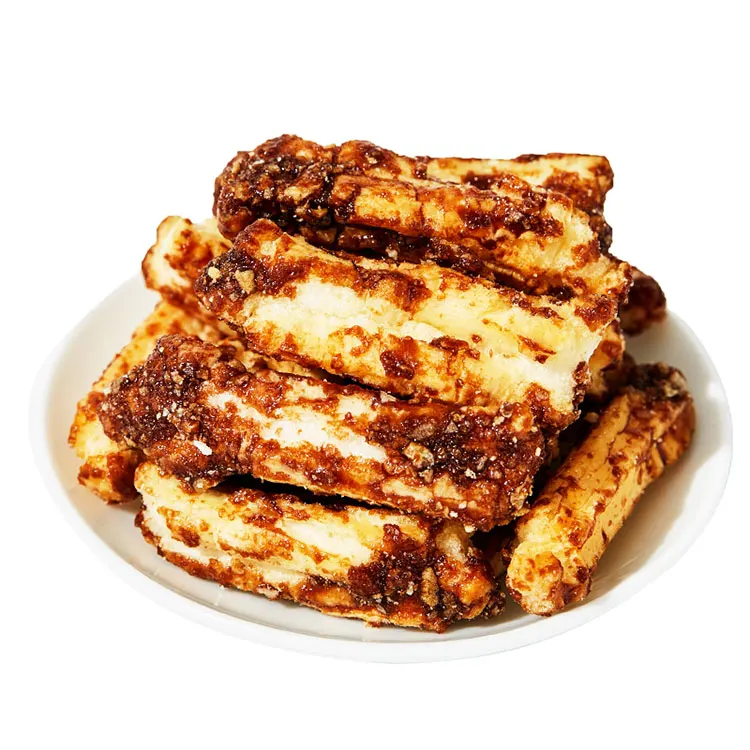The History of Rice Crackers
2024-12-13
Rice crackers are a beloved snack enjoyed worldwide, with their origins deeply rooted in the cultures of East Asia, particularly Japan and China. Their history spans centuries, evolving from simple recipes to the diverse and innovative variations available today. Let’s explore the fascinating journey of rice crackers.
Origins in China
Rice crackers are believed to have originated in China over 2,000 years ago. Ancient Chinese culinary traditions included making snacks from glutinous rice, ground into a paste and shaped into various forms. These early rice-based snacks were not only a source of sustenance but also held symbolic value during festivals and celebrations.

Evolution in Japan: Senbei and Okaki
Rice crackers gained prominence in Japan during the Nara period (710–794 CE). Japanese rice crackers, known as senbei and okaki, are made from different types of rice.
- Senbei: Traditionally crafted using non-glutinous rice, these crackers are often grilled or baked and seasoned with soy sauce, seaweed, or sugar. They became popular among Japanese nobility before spreading to the common people.
- Okaki: Made from glutinous rice, okaki involves pounding rice into mochi, which is then dried, cut, and grilled or fried. This process makes okaki crispier and slightly chewier than senbei.
The popularity of rice crackers in Japan grew during the Edo period (1603–1868), as trade routes enabled the distribution of these snacks across the country. Regional variations began to emerge, incorporating local ingredients and flavors.
Modern Globalization
In the 20th century, rice crackers gained international recognition, especially in Western countries. The rise of health-conscious eating made rice crackers a preferred choice for those seeking low-fat, gluten-free snacks. Manufacturers began creating fusion flavors, blending traditional Asian seasonings with modern tastes like cheese, barbecue, and spicy chili.
Cultural Significance
Rice crackers have become more than just a snack; they are symbols of tradition and hospitality. In Japan, senbei are often served with green tea and are commonly given as gifts. During New Year celebrations, varieties of rice crackers are included in festive assortments to bring good fortune.
Varieties Around the World
Today, rice crackers are made and enjoyed worldwide, with notable adaptations in different regions:
- China: Savory rice cakes and crispy rice snacks remain popular, often flavored with sesame or scallions.
- Korea: Gangjeong, a sweet rice snack, combines puffed rice with honey and nuts.
- Southeast Asia: Rice crackers like kerupuk in Indonesia and krupuk beras in Malaysia are often fried and paired with dips or soups.
Rice crackers have come a long way from their humble beginnings. Their enduring appeal lies in their versatility, offering a satisfying crunch and a canvas for an endless array of flavors. Whether traditional or modern, rice crackers continue to bridge cultures, bringing joy to snack lovers everywhere.


